UK food and drink producers have grown at their fastest rate in nine years but as we hurtle towards Brexit, the sales performance hides more worrying trends below the surface
UK food and drink producers can’t catch a break. No sooner has the industry’s growth engine finally spluttered into life, than suppliers find themselves hurtling towards a potential no-deal Brexit.
And while the possibility of backstop deals, transition arrangements, no-deal cliff edges and even a second referendum hove into view, the implications for UK food and drink are becoming increasingly stark. They include produce rotting due to border delays, costly tariffs, and labour shortages.
Industry confidence in a transition agreement to mitigate disruption in spring 2019 is evaporating, believes OC&C head of consumer goods Will Hayllar. “The possibility of short-term disruption not many months away is becoming sharper in people’s minds. They are starting to think more about supply chain contingencies.”
What makes these concerns all the more worrying is that the industry is heading into a potentially chaotic period from a position of historic weakness.
The five top performers

Britvic
Turnover: £1.52bn (+7%)
Operating margin: 12% (-1.8%pts)
Despite uncertainty surrounding 2018’s impending sugar tax, the Robinsons’ maker fizzed to much-improved sales growth as it invested heavily into sugar-free. Pricing pressure from retailers continued to bear down on margins, consumer demand for fizzy drinks still soared. Ahead of this April’s levy, Britvic’s carbonated drinks performed well as it worked on a “healthier everyday” strategy, pushing no sugar brands Pepsi Max and 7up free ahead of the legislation change. Despite strong top line performance, its still drinks category saw revenues fall despite some volume growth as pricing pressure increased. Nevertheless, core brands such as Robinsons gained share, as it returned to sales growth.
Cranswick
Turnover: £1.47bn (+15.9%)
Operating margin: 6% (-0.2%pts)
Flattening pork sales in the UK may have brought on sweats at Cranswick, but the meat giant saw sales rocket as it invested into its rapidly growing poultry arm, new food-to-go channels and M&A to be one of 2017’s best performing suppliers. With over 844 product launches in 2017, investment in new products stimulated growth and contributed 11.5% of the total sales. As well as investing in existing contracts, Cranswick boosted revenues after winniing two premium cooked chicken listings with two major retailers. CEO Adam couch highlighted that the business was turning attention to “omnichannels” and not just traditional retail. Over the year it sustained strong growth in its ‘food-to-go’ arm, with numerous products listed in key hotel, pub and food service chains.
Quorn
Turnover: £205m (+16.5%)
Operating margin: 15% (+1.4%)
As the meat-free boom shows no sign of slowing, Quorn Foods achieved its strongest ever year of growth as sales leapt above £200m in 2017. While there has been an increase in flexitarianism and veganism, the company has also benefited from a change in attitude of a broader customer base who are now choosing to eat less meat. Internationally the brand also improved growth, with sales in Europe up 27% and the US, Quorn’s biggest export market, up 35%. The sustained growth has been backed by capex investment, with £7m being funnelled into innovation and technology to improve the fermentation processes of its protein and drive NPD.
Fever-Tree
Turnover: £170m (+66.9%)
Operating margin: 34% (+0.9%)
While margins have flattened, stock market Fever-Tree has kept up rapid sales growth, impressing investors as its share price doubled during the year. The mixer brand was the fastest growing supplier in the top 150 index by creating the new premium mixer sub-category, which it has driven globally to compliment the current growth in high-end spirits. Fever-Tree has helped to establish itself through low capex, utilising outsourced production to rapidly expand since starting in 2013. It has launched a raft of new products and entered a number of new channels to tap into a range of spirits, but has successfully stayed exclusively premium.
Greencell
Turnover: £194m (+15.6%)
Operating margin: 3% (-0.1%)
Fruit and vegetable supplier Greencell has thrived off millennial shopping habits. It has made the most of the rising popularity of its core product, the avocado, to develop rising sales over the past 12 months. Greencell rose up the index despite falling margins amid pressure increased on the supplier, as continually strong UK demand led to a £29.8m sales increase in avocados. Rather than searching for growth abroad, the supplier has ridden UK growth and remained UK-focussed, continuing to invest in facilities here. It invested £1.5m in 2017 to increase avocado-ripening capacity, and remained committed to price-competitiveness despite an inevitable contraction of margins.
On the positive side, the OC&C/Grocer Top 150 shows a dramatic turnaround in top-line growth for the UK’s biggest food and non-alcoholic drink suppliers. Aggregate revenues across the Top 150 jumped 7.5% in 2017, the highest growth since 2009, and a marked rebound from the 0.8% fall in 2016. In all, 112 of the Top 150 grew sales, with 49 in double-digit growth. This marks the first time in four years that growth has been above the long-term industry average of 4.9% as the price war and discounter growth has driven widespread industry deflation.
However, it’s a mixed blessing. The report suggests the vast majority of growth has been driven by inflation. – with the post-Brexit plunge in the value of the pound in effect importing inflation (50% of UK food is imported) and exacerbating wider commodity price inflation.
Late 2017 and early 2018 saw food and drink inflation exceed the overall CPI for the first time since food prices fell into deflation in 2014, driven largely by sterling’s depreciation – it as sterling dropped 16% against the euro in 2016 and a further 4% in 2017.
“It’s apparent that higher growth is a part of pricing passed through post-Brexit and commodity inflation,” says Jefferies analyst Martin Deboo. “It is not an indication of higher structural growth.”
Input inflation is almost £1.6bn, inevitably hitting bottom lines. Supplier margins fell back from 6.7% to 6.2% last year – below their long-term average of 6.4%. True, 60 companies expanded operating margins, but 88 saw profits fall, suggesting producers have passed on a measure of input inflation to retailers and consumers, but had to absorb a chunk themselves.
Passing on inflation
OC&C analysis suggests around £645m of the £1.6bn has been absorbed – passing on about £1bn to retailers, who in turn passed on £1.7bn to consumers as they grew gross margins, even as inflation bit.
Hayllar describes supplier success in passing on input inflation as “middling”. “They didn’t get caught out, as they did in the previous inflation spike of 2012, but equally they haven’t had the free rein they did in the mid-2000s to pass it all on,” he says.
Producers with low margin and low added value businesses, such as agricultural suppliers, will usually have reasonably transparent processes to push through price increases, based on commodity price fluctuations. For other players, hiking prices in a highly price-conscious grocery retail environment has required more creative thinking.
“Getting like-for-like price increases through is incredibly difficult,” says Rothschild’s global head of consumer Akeel Sachak. “Generally you will need to innovate to secure a price increase.”
Stories have abounded over ‘shrinkflation’ to inflate cost per gram returns, while other producers have premiumised products, reformulated recipes to protect margin or altered promotional mechanics to support average prices. Hayllar also notes that all the major mults have rowed back from their various pricing guarantees as promotional mechanics change.
Notably, though smaller branded and own label players continue to drive faster topline growth, larger branded companies (with revenues over £500m) were most able to protect margin. Large branded companies’ margins fell just 0.1ppt to 9.3% companies, while falling 0.9ppts for small branded players to 8.2%, and there was a 0.6ppt and 0.4ppt drop for large and small own-label producers to 3.7% and 3.3% respectively.
Hayllar suggests this may be the benefits of scale working once more as larger branded producers typically have more sophisticated risk management systems and potentially more pricing power to respond to rising costs.
The full effect of rising input costs may not yet be fully felt, as currency hedging arrangements unwind, buying agreements expire and existing stock is used. Muted disposable income growth – flat in 2017, according to the Asda income tracker, compared with a 9% rise in 2014 – suggests passing on inflation to consumers will not get any easier.
Additionally, retailer and supplier relationships have become more constructive in a post-GSCOP world, but escalating retailer consolidation – Tesco-Booker, Co-op-Nisa and most of all Sainsbury’s-Asda – is likely to lead to fewer opportunities to push price increases down the line. And whereas global fmcg companies have wielded the axe on costs UK suppliers have proved reluctant to follow. The OC&C Global 50, published in July 2018, showed the world’s biggest fmcg brands clawing back margin through zero-based budgeting programmes to drive efficiencies, but there is little evidence of a big push to drive down costs for the Top 150.
Inefficiencies
In fact, as well as rising input prices, the Top 150 has faced rapidly rising staff costs and failed to move the needle on production efficiencies. Headcount across the group rose 2.4% last year – in own label it was up 4.6% – and a 6% rise in Top 150 staff costs per employee outstrips the 5% increase in revenue per employee.
It doesn’t take a business guru to see hiring more staff who are becoming less efficient is a recipe for trouble.
UK suppliers are sellers not buyers right now
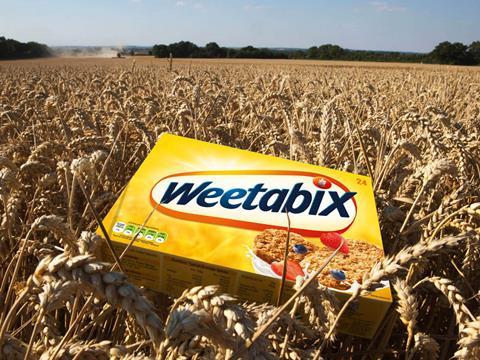
Global fmcg growth has been supercharged by a spree of multi-billion dollar deals, but UK M&A continues to sag under the weight of the looming EU exit.
The volume of UK domiciled deals over £20m ticked up in 2017 from 5 to 7, though this level of activity remains the second lowest in the past seven years and way behind the 21 and 20 deals recorded in 2006 and 2007 respectively.
Additionally just 2 deals over £20m have closed this year as of August 2018.
OC&C’s Will Hayllar says the underlying motivation for UK M&A remains strong. “The underlying challenge that big brands face in terms of how to drive organic value volume hasn’t changed, so that motivation to buy up creative brands is still there.”
What seems to be holding back buyer interest is the looming threat of Brexit, with all but the most committed or opportunistic buyers hitting pause until there is more clarity around the eventual exit deal.
“It’s an extra question mark in this market,” Hayllar says. “Why would I invest my money in a UK-based business now if I have the choice of putting it anywhere in the world?”
In particular, deal interest from Europe has sagged in recent years, with EU buyers accounting for just 7% of deal values last year, compared to 74% in 2014 and 25% in 2013.
Conversely, interest from the US has stepped up in relative terms – with American acquirers accounting for 91% last year by deal value and 55% in 2016. Deal values did soar from just £0.7bn to £5.8bn in 2017, but this was primarily down to two multi-bullion pound deals from US buyers in Reckitt’s £3.2bn sale of its global food business to McCormick and Post Holding’s £1.4bn swoop for Weetabix.
The fall in the pound – which could be exacerbated by a no-deal Brexit that UBS this month predicted would lead to sterling falling below the euro – clearly makes UK businesses cheaper to buy in relative terms.
And any obstacles to free trade between the UK and Europe could incentivise bidders to step up interest in UK companies. Hayllar suggests: “A tariff regime between the UK and EU could trigger a wave of closures, but you could also see international buyers looking to acquire local UK manufacturing assets to get a foothold in the country.”
Mounting cost pressures related to the national living wage will be exacerbated by restrictions on EU labour post Brexit. And there is plenty of evidence that the Brexit effect is already being felt.
The UK food manufacturing industry is more reliant on EU labour – it makes up around 31% of the workforce – than any other industry in the UK. And following the Brexit vote in June 2016, the rate at which EU workers are migrating to the UK has fallen by 10.6%, compared with growth of 4.5% from the rest of the world as lower relative wages and the changing political climate has cut inward EU movement.
As Deboo notes: “The UK food industry, particularly own label, is built on imported labour.” Changes to migration rules post Brexit and the escalator built into the national living wage policy suggests people are only going to become more expensive.
Capital expenditure across the Top 150 nudged up 1.4% to £2bn last year, edging up to 3% of revenues in 2017 from 2.9% in 2016. Own label players grew capex by 12.5% to capitalise on structural growth and build capacity, but for branded players capex dropped 6.5%. Only 47% of Top 150 companies increased investment as a proportion of revenues.
What’s more, this investment has failed to turn around the efficiency slide, with industry return on capital declining to a low of 12.4%.
Even where the incentive to invest is clear, the current environment has led to caution. Sachak argues: “A lot of capital investment decisions have been put on hold pending Brexit, particularly amongst larger companies with a much more international footprint and therefore choices as to where they deploy their capital.”
A number of those UK players trying to grow organic sales are investing to capitalise on pockets of industry growth, even at the short-term expense of margins.
Quorn is prioritising top-line growth and investing heavily in innovation to roll out its meat-free proposition into more supermarket aisles, , including the relaunch of its ready meals range and exploring pizza and sandwich products. CEO Kevin Brennan worries a cautious investment strategy is a false economy. “If your capex as a percentage of sales keeps going down, your factories get older and your R&D diminishes – you can only get away with it in the short term.”
Similarly, Cranswick has invested in adding a poultry proposition to its core pork capabilities, with CEO Adam Couch commenting: “People are nervous about investment in infrastructure because of Brexit and the uncertainty that surrounds it, but unless we put our money where our mouth is, there’s going to be no future for our businesses, whether pig or poultry.”
Exports
One area where the UK top 150 has collectively moved the pre-Brexit needle is stepping up exports. The 2016 collapse in the value of the pound provided an obvious tailwind to international sales, but the Top 150’s 14% international sales growth was primarily driven by real constant currency growth of 8% (with 6% due to the weak pound).
OC&C’s Hayllar notes this jump – which represents a significant improvement on 2016 where 10% global sales growth was offset by a bigger 12% currency impact – is not entirely Brexit-related though.
“The malaise of the UK grocery market was the real trigger for people to look at different places they could sell their products,” he says. “The currency rebasing has been helpful, but it typically takes several years after putting focus and resource into exports before the benefits are truly seen.”
Two-thirds of companies recorded international sales share growth, which rose to 21.6% from 20.7% for the year, with international sales themselves up 14.1% compared to 4.7% for UK-only sales.
But the value of exports as a post-Brexit contingency is mitigated by the EU being far and away the most important market for food and drink exports.
And this is at the heart of the current Brexit conundrum – the March exit is closing in, but the material preparations that can be made are severely restricted due to the sheer level of uncertainty.
In mid-September The Grocer noted a number of major suppliers had pulled the trigger on plans to build a ‘safety stock’ of goods and ingredients in the UK and Europe in preparation for potential border delays between. But in truth, such contingencies remain a sticking-plaster solution for a wound yet to reveal its depth.
Consolidation: a big squeeze on suppliers?

If the headache of the UK’s impending Brexit was not enough to keep suppliers up at night, UK producers are also facing the biggest shake-up of the UK grocery retail industry in a generation.
As grocery operating margins have tumbled from a robust 5%-6% in the 2000s down to barely 2% under intense pressure from discounters, convenience and online, the industry response has moved to one of large-scale consolidation over the past year.
Tesco closed its £3.7bn buyout of Booker in March, The Co-op completed its takeover of Nisa in May and the biggest deal yet – the £12bn merger between Asda and Sainsbury’s is currently under review by UK competition authorities.
Amongst the issues the Competition and Markets Authority will investigate is the effect the big four becoming the big three will have on UK suppliers.
There are early causes for concern, with the pair pledging to find £500m of buying “synergies”, effectively driving down prices they pay suppliers by harmonising purchasing terms and retendering contracts.
“There will be winners and losers from that type of exercise,” Hayllar says. “For stronger suppliers, if they have the ability to invest and give away some price reductions they can get volume growth on the back of that and may be in a position to achieve material market share gains.”
However, Rothschild’s Sachak suggests the power of traditional retailers over suppliers has waned, largely because of e-commerce, meaning retailer consolidation may not be the material threat some predict.
“I don’t know that consolidation is necessarily going to lead to more long-term grief for suppliers because they have more alternative routes to market than they used to have,” he says. “I don’t think its as simple as traditional retailers making more money by taking margin out of suppliers – that game has run its course.”
In this sense, the industry consolidation can be seen as a defensive move against the growing power of online retail – and Amazon in particular – rather than to aggressively drive margin recovery at the expense of the wider industry.
Amazon’s presence in the UK grocery market remains limited outside certain niches, but its August 2017 purchase of Whole Foods indicated a radical change in their approach to grocery that will surely bleed into the UK market.
The grocery retailers are getting their defensive moves in early – it is not clear whether suppliers are as ready to react to scaled up Amazon grocery offering in the UK.
“Suppliers are still working out how to engage with technology and e-commerce and have been pretty timid about the opportunity to disintermediate traditional retail to date,” Sachak says.
In this period of rapid retail change, OC&C advises suppliers to step back and reassess their relationships with retailers to refocus on exactly where value is truly being added.
“The range of outcomes is so broad that most have no choice but to sit on their hands and wait to see what happens beyond short-term stockpiling of raw materials imported from Europe,” says Sachak.
Hilton Food Group executive chairman Robert Watson concurs: “We’ll meet whatever challenges the new way of operating brings – there is little point us spending a lot of time today wondering about what-ifs.”
That is not to say the real world impact of a disruptive no-deal scenario is easily overcome. Innocent Drinks CEO Douglas Lamont talks of the “massive issue” of any border inefficiencies slowing the import of short-shelf life fruit, arguing that the most likely mitigation is to shift bottling – and jobs – out of the UK.
Importantly, where there is a short-term – and potentially devastating – Brexit threat, there are longer-term opportunities the UK’s exit could engender.
Domestic boost?
The UK has a net trade deficit with the EU across all major food and beverage categories, including a £3.9bn deficit on meat, £2.4bn on fruit & veg and £1.7bn on dairy. As Hayllar points out “we are still net importers of food, so anything that creates tariffs or trade barriers ought to create a bigger domestic market for UK supply”.
Cranswick’s Couch makes a similar point, stressing that the UK is only 50% self-sufficient on pigmeat, meaning there is clear potential to take back market share from exporters in the UK. Additionally, he notes: “What is potentially more interesting are some of the global macro events, such as tariffs coming in between China on the US, which could provide an international opening for European exporters”.
The potential regulatory ‘year zero’ also presents a vital opportunity for industry players to work with the government to shape a new food and drink regime that could underpin a more favourable environment.
For example, while current legislation looks to protect producers from extra-EU competition, new UK legislation will consider EU competition for the first time in a generation, while there is important debate around how UK standards should compare internationally and the creation of a new subsidies regime.
Like every area of post-Brexit Britain, the regulatory impact of leaving the EU offers a balance of opportunities and threats – from the benefits of speeding pesticides approvals to the potential headache of mandatory food labelling requirements.
“In this uncertainty the one practical thing producers can really do is try to influence policy in the sensible places that help and to avoid the unintended complexity of legislation that isn’t well influenced and consulted,” says Hayllar.
As March’s Brexit D-day looms, the only certainty is more uncertainty. The UK’s exit from the EU could usher in the biggest supply chain and regulatory shake-up the industry has seen for generations. Or it could not.
All suppliers can do is control the controllables – and the evidence suggests many need to do a better job of getting ahead of the intensifying issues facing the industry, whatever the Brexit agreement.
Those suppliers who tactically invest to play to their strengths and mitigate stresses despite the uncertainty are likely to find the Brexit cliff-edge more manageable than those who only start planning as they plummet towards the ground.
Downloads
OC&C 150 2018
PDF, Size 7.14 mbOC&C Top 150 2018
PDF, Size 0.33 mb




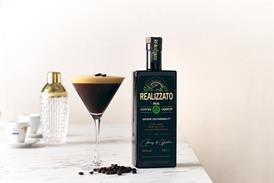



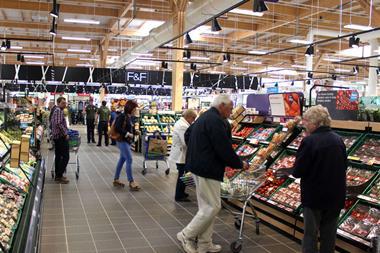

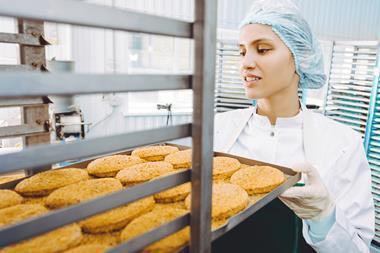
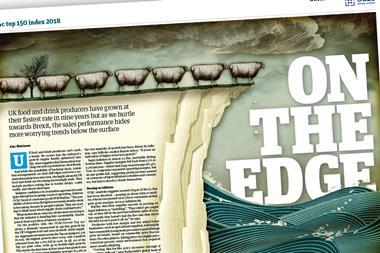

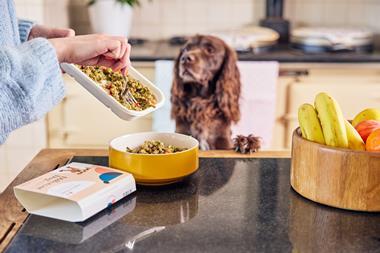





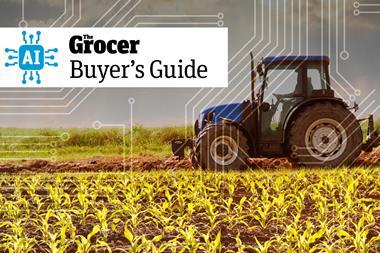
No comments yet